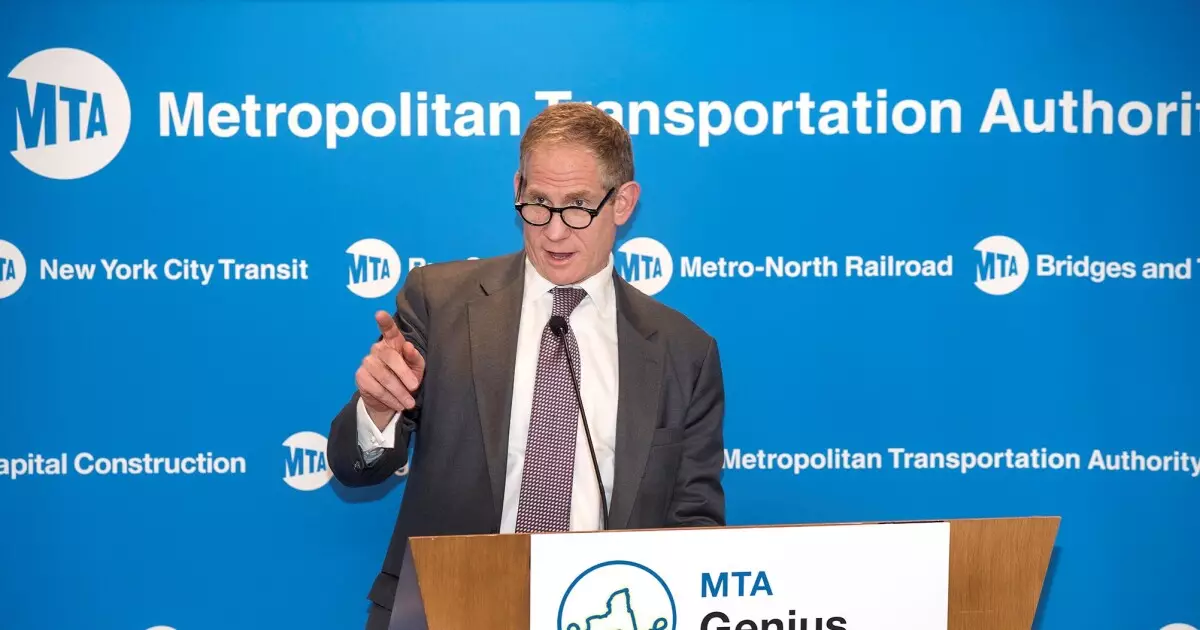The negotiation and approval processes that underpin New York’s Metropolitan Transportation Authority (MTA) funding are nothing short of a political battleground. Recently, the MTA’s CEO Janno Lieber expressed measured optimism about the new state budget that aims to fill a formidable $31 billion gap in the authority’s capital plan. While this development is eye-catching, it is critical to peel back the layers and scrutinize both the implications of this budget agreement and the sustainable practices underlying it.
Capital Spending and Accountability
At the heart of this budget deal lies a significant expectation for the MTA: a promise to enhance operational efficiency and exhibit fiscal responsibility. The eagerness of Governor Kathy Hochul to inject more money into the transit system, buoyed by an increased payroll mobility tax, raises several questions. It’s essential to recognize that financial prudence requires more than mere inflow of cash; it demands a commitment from the MTA to spend it wisely. Indeed, while increasing the payroll mobility tax might target larger employers, this could potentially stifle economic growth in an already taxed business climate. An increase in taxes could eventually trickle down to consumers and impact overall public sentiment toward public spending.
At the recent MTA board meeting, Lieber expressed elation about this budgetary commitment, deeming it a “huge moment” for public transit. Yet his enthusiasm must be tempered by a robust accountability framework. The capital plan is extensive: $68 billion earmarked primarily for “state of good repair” projects. However, historical precedents suggest that ambitious plans often sidestep transparency, introducing risks of waste and inefficiency. Pledging to maintain a debt service ratio is commendable, but if unaccompanied by stringent monitoring mechanisms, it potentially makes this pledge meaningless.
The Role of Bond Financing
Leveraging $44 billion in bonds signifies MTA’s reliance on debt to finance its current endeavors. While it’s understandable that capital-intensive projects might necessitate bond issuance, alarm bells should ring when institutions become heavily indebted without a clear plan for repayment. Lieber insists on a commitment to keep 15% of the operating budget for debt service, but as history has shown, this is a delicate balancing act. Debt accrual can become a hamster wheel: it allows immediate access to funds but creates future liabilities that often lead to increased fares or further tax hikes.
Moreover, with the shadow of federal tariffs and political uncertainty looming over construction projects, the anticipated savings that Lieber expresses confidence in could evaporate under rising costs. Tariffs, particularly on essential building materials, threaten to curtail the already constrained budget, amplifying the need for a more realistic assessment of the MTA’s financial future. The potential legislative actions aimed at rescinding federal grants could add an extra layer of risk, making it imperative for the MTA to prepare for pushback against these threats proactively.
Public Sentiment and Political Will
Public transit is often politicized, and the stakes have now risen even higher with the MTA’s newly discovered funding. Kicking off projects as quickly as possible, as Lieber urges, might evoke enthusiasm but could also lead to hasty decisions driven by public relations rather than sound policy. The perception that these projects are merely knee-jerk reactions to a funding crisis could enhance skepticism about their long-term viability.
Conversely, there is an opportunity here: if managed correctly, this moment could foster trust among New Yorkers. It is the responsibility of those in power to ensure that investments genuinely translate into better services, with visible improvements in transit systems. The enduring issue of deteriorating infrastructure necessitates transparency and dialogue with the public to rebuild confidence in the MTA.
A Cautionary Optimism
While some optimism is warranted, particularly with the MTA’s focus on achieving operational efficiencies, it is essential to critique the long-term implications skeptically. Center-right fiscal policies often stress accountability and limited governmental reach, making it imperative to question whether these investments are genuinely in the public’s best interest or merely a way to buy political capital.
In this brave new world of fiscal maneuvering, clarity and close scrutiny must walk hand in hand with promise. New Yorkers deserve not just promises to fill budget gaps but well-founded commitments to revitalizing their public transportation system wisely, ensuring that improvements genuinely reflect the community’s needs while fostering a sustainable economic environment. True progress requires more than words; it requires action rooted in fiscal discipline and unwavering accountability.

